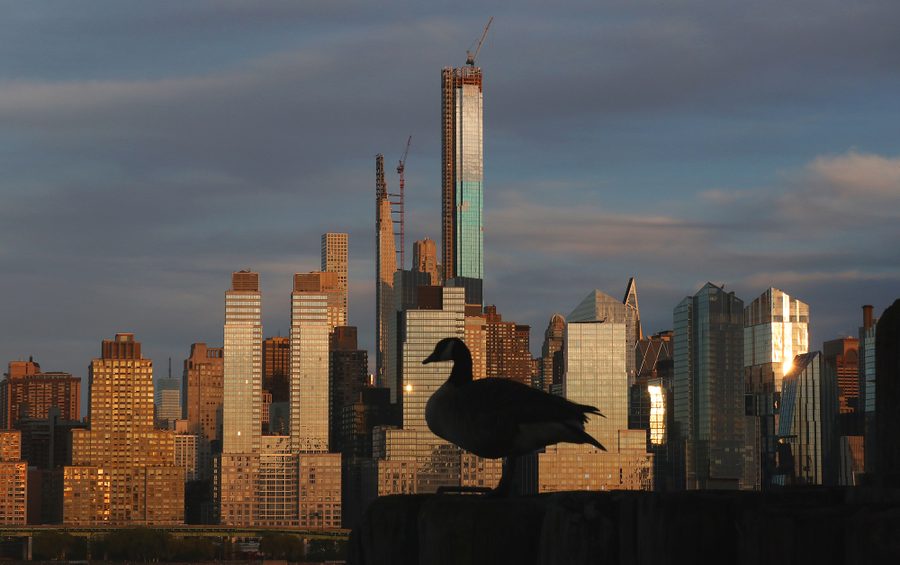This Terrifying Economic Crisis Will Make Cities Better
Amid the pandemic, the rich are fleeing American cities. That’s a good thing.
Hamilton Nolan

Have you heard? The golden age of the American big city is over. The pandemic and the protests are scaring people away. Residents are fleeing. Crime is up. Budgets are busted. The offices are empty, the rich are moving to the suburbs, and the period of unbroken prosperity has shattered forever.
Good.
Well — to be more precise — there is a strong potential for this to be good, if a few things break the right way. The pandemic is bad, as is the human suffering and the economic catastrophe — and it’s all likely to get worse. But the city? The city is going to be reborn for the better.
To understand why this is true, you have to understand who cities are for: everyone. Cities are not theme parks for the rich, where everyone who makes less than six figures is simply a cast member with a service role. Cities are not architectural showrooms for bank branches. Cities are not apartheid states that provide the raw material to the prison-industrial complex. Cities are not just backdrops for Amazon’s new headquarters building. Cities are — or should be — frenetic quilts where every type of person lives together. The magic, and the benefit, of cities is that they bring together rich and poor, young and old, artists and business people and college kids and retirees and hustlers, facilitating unpredictable relationships and smashing (to some degree) the bubbles that we form to separate ourselves from one another.
That capability of cities has broken down in two ways. Some cities have been hollowed out by post-industrial decline, losing the primary drivers of their economies with nothing to replace them. This is the Detroit problem, and its empty downtowns and boarded-up homes can be seen in once-thriving cities across the country. But other cities have been afflicted by the opposite problem: death by prosperity. From New York to Los Angeles, San Francisco andSeattle, a rapid influx of wealth into such cities has raised the cost of living in general, and the cost of housing in particular. In the most successful cities in America — the very places where it would make the most sense to encourage the most people to live — the rent is too damn high, and, for the average working person, buying a home is a mathematical impossibility.
This condition has reached the most absurd proportions in San Francisco, where there are virtually no homes in the entire city that one could purchase on a teacher’s salary. The same dynamic is true in large swaths of New York and other thriving cities. Unless you believe that cities should come with ready-made slums populated by the servant classes, you have to admit that a city without affordable housing is fundamentally flawed.
The most rational response to this influx of rich people into cities would have been to build a large amount of new housing, in order to prevent the prices of the city’s housing stock from skyrocketing as it was bid up by wealthier residents. Of course, that is not what happened. Instead, every city just allowed their housing prices to skyrocket until they faced deficits of hundreds of thousands of units that would need to be built in order to meet demand. In the long term, that housing will indeed have to be built as cities grow; but the past decade is proof that in the short term, it will not happen, due in large part to the intransigence of existing homeowners, who make up the most potent force in any city’s local politics.
For years, it has seemed like many of America’s cities were doomed to become increasingly unaffordable playpens for the rich, able to be visited by normal people, but not lived in. Unless… there was an exodus of the upper class from major cities. Wow — that’s just what the pandemic has provided! All of the trend stories about New Yorkers fleeing the city “in droves” are not about the poor, nor about the middle class. They are about the wealthy, who have the means to go live wherever they want. And while this dynamic is being presented by some media outlets as a nightmare, the reality is that a reduction in the demand of upper class people to live in cities would serve as a release valve on housing markets, making these cities more affordable for everyone else.
Lack of money can devastate a city. But money can devastate a city as well. Overwhelming prosperity drives out the cool people, prices out the artists and the dive bars, and promotes chain stores and luxury goods. It makes once-interesting and unique places look like everywhere else. This has happened to Manhattan. It has happened to San Francisco. It has happened to gentrified neighborhoods in Atlanta, and in Denver, and in Los Angeles. But it can be reversed. The big chain stores are already shutting down in New York. In their place will be something cooler, because there is nothing less cool.
Of course, there is a steep downside to what is happening to cities right now. City budgets rely on tax revenue. When the businesses and the people in cities are not making money, and when the property values decline, tax revenue goes down, and budgets get cut. We are living through that now. New York City is poised to lay off more than 20,000 city workers, and they are not all bad cops. They are sanitation workers and ambulance drivers and transit workers and the other people who make the city run. Losing them will make the city a worse place to live. The city will be dirtier, crime will rise, the subways will break down, and countless needs will go unmet as services are slashed. If all of this were inevitable, it would certainly be a strong argument against the idea that there is any silver lining to all of this.
But it is not inevitable. City budgets can be rescued by the federal government. Indeed, money to bail out city and state governments, to prevent the cutting of services outlined above, appears to be one of the main sticking points in the current stalled negotiations between Democrats and Republicans on a new Covid rescue package. If Republicans get their way, city budgets will have to be cut, and the downward spiral will commence, and any new housing affordability will come at the cost of a much more broken city that will hurt the most vulnerable residents. But if the federal government does the wise thing — most likely under a future President Joe Biden —then we could enjoy the exodus of a good number of wealthy people from our cities and the subsequent relief in housing prices without the awful cuts to mass transit and other services. In that scenario, we could legitimately be entering a new golden age of cities — affordable for normal people, open to art and music and culture once again, and without Chase branches and tech bros littering the streets. The dream would be realized.
So keep yelling at the rich to scare them away, but be sure you also yell at Congress. If we don’t get that bailout money, things are gonna suck. But if we do, you may finally get a chance to live without a roommate.
Hamilton Nolan is a labor writer for In These Times. He has spent the past decade writing about labor and politics for Gawker, Splinter, The Guardian, and elsewhere. More of his work is on Substack.








